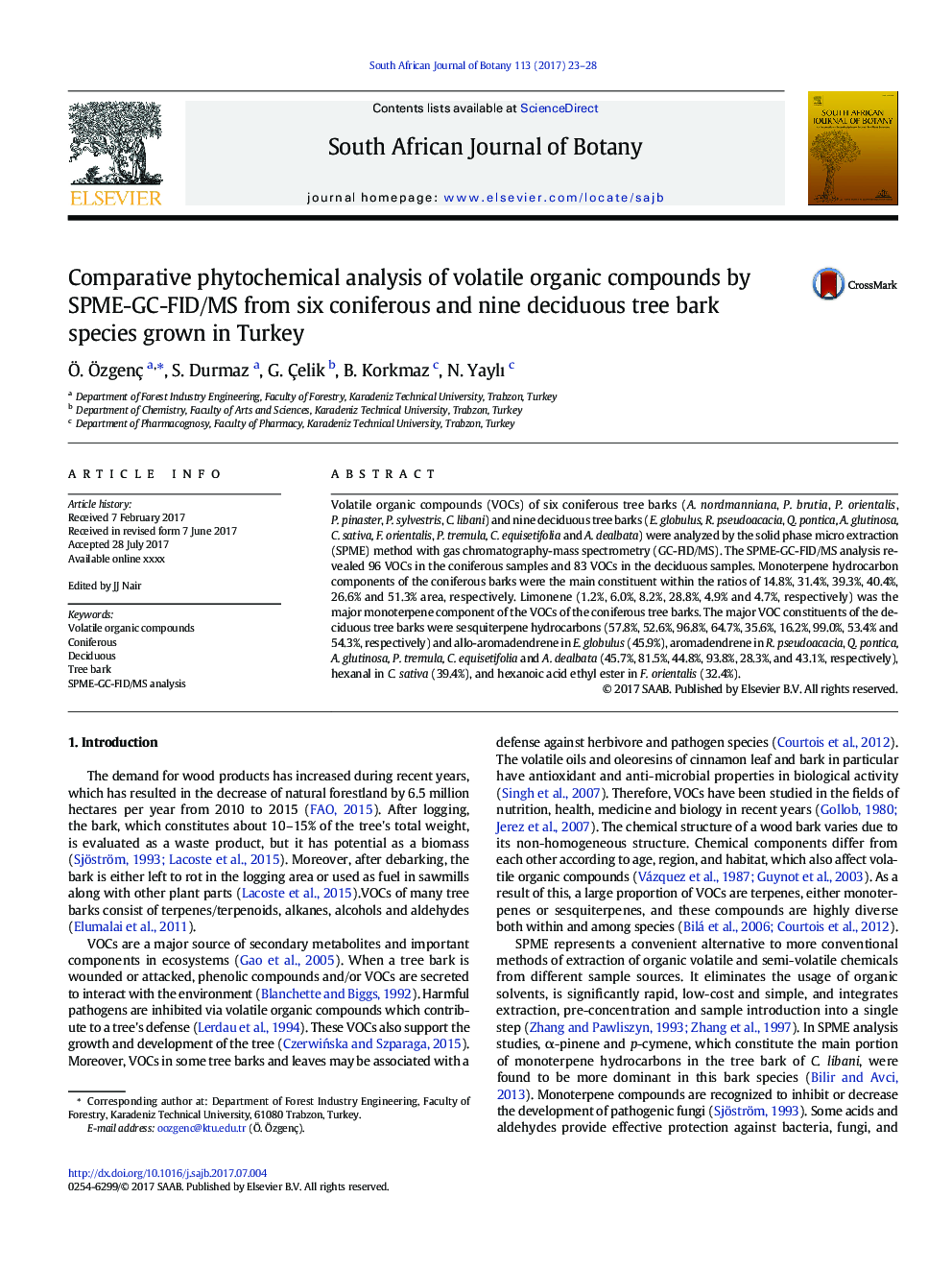| Article ID | Journal | Published Year | Pages | File Type |
|---|---|---|---|---|
| 5762886 | South African Journal of Botany | 2017 | 6 Pages |
Abstract
Volatile organic compounds (VOCs) of six coniferous tree barks (A. nordmanniana, P. brutia, P. orientalis, P. pinaster, P. sylvestris, C. libani) and nine deciduous tree barks (E. globulus, R. pseudoacacia, Q. pontica, A. glutinosa, C. sativa, F. orientalis, P. tremula, C. equisetifolia and A. dealbata) were analyzed by the solid phase micro extraction (SPME) method with gas chromatography-mass spectrometry (GC-FID/MS). The SPME-GC-FID/MS analysis revealed 96 VOCs in the coniferous samples and 83 VOCs in the deciduous samples. Monoterpene hydrocarbon components of the coniferous barks were the main constituent within the ratios of 14.8%, 31.4%, 39.3%, 40.4%, 26.6% and 51.3% area, respectively. Limonene (1.2%, 6.0%, 8.2%, 28.8%, 4.9% and 4.7%, respectively) was the major monoterpene component of the VOCs of the coniferous tree barks. The major VOC constituents of the deciduous tree barks were sesquiterpene hydrocarbons (57.8%, 52.6%, 96.8%, 64.7%, 35.6%, 16.2%, 99.0%, 53.4% and 54.3%, respectively) and allo-aromadendrene in E. globulus (45.9%), aromadendrene in R. pseudoacacia, Q. pontica, A. glutinosa, P. tremula, C. equisetifolia and A. dealbata (45.7%, 81.5%, 44.8%, 93.8%, 28.3%, and 43.1%, respectively), hexanal in C. sativa (39.4%), and hexanoic acid ethyl ester in F. orientalis (32.4%).
Related Topics
Life Sciences
Agricultural and Biological Sciences
Agronomy and Crop Science
Authors
Ã. Ãzgenç, S. Durmaz, G. Ãelik, B. Korkmaz, N. Yaylı,
